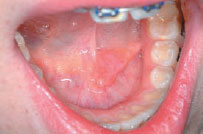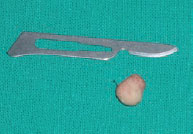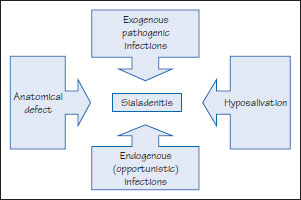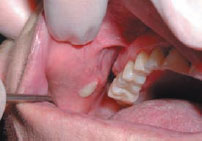43 Salivary conditions: Sialolithiasis, sialadenitis
Figure 43.1a Sialolithiasis.

Figure 43.1b Sialolithiasis.

Figure 43.2 Sialadenitis: causes.

Figure 43.3 Sialadenitis.

Figure 43.4 Sialadenitis showing pus from Stensen duct.

Sialolithiasis
Definition: Calculus, usually in a salivary duct.
Prevalence (approximate): Uncommon.
Age mainly affected: Older adults.
Gender mainly affected: M = F.
Etiopathogenesis: Possibly salivary stasis.
Diagnostic features
History
Oral: Symptomless, or pain/swelling related to meals.
Clinical features
Oral: Salivary calculi (sialoliths):
- usually affect the submandibular duct (Figures 43.1a and 43.1b)
- are usually yellow or white and can sometimes be seen in the duct
- may be palpable
- are commonly radiopaque
Calculi are even less common in the parotid and then are typically radiolucent, and are rare in minor glands. Calculi may lead to sialadenitis.
Differential diagnosis: Other causes of salivary gland swelling.
Imaging: Sialography if necessary (Figure 5.8).
Management
Surgical, endoscopic or lithotripsy removal of obstruction.
Prognosis
Good.
Sialadenitis
Sialadenitis may arise from a number of causes (Figure 43.2).
Sialadenitis: Acute viral (mumps)
Definition: An acute infectious viral infection of salivary glands.
Prevalence (approximate): Common.
Age mainly affected: Children.
Gender mainly affected: M = F.
Etiopathogenesis: Usually infection with the mumps virus (an RNA paramyxovirus). Transmission of classical mumps is by direct contact or by droplet spread from saliva.
Rarely, other viruses (e.g. Coxsackie, ECHO, EBV, CMV, HCV or HIV) cause similar syndromes.
Diagnostic features
History
Stay updated, free dental videos. Join our Telegram channel

VIDEdental - Online dental courses


